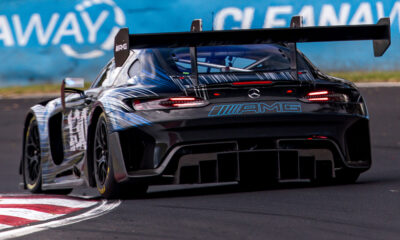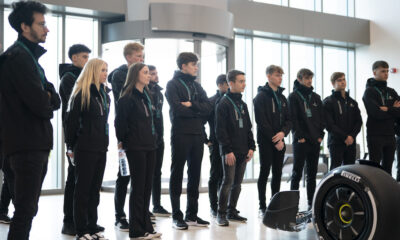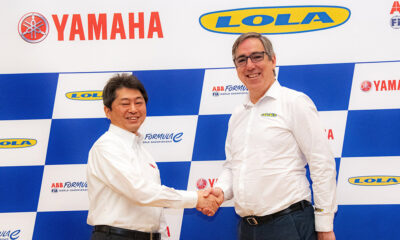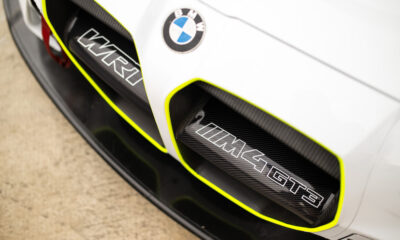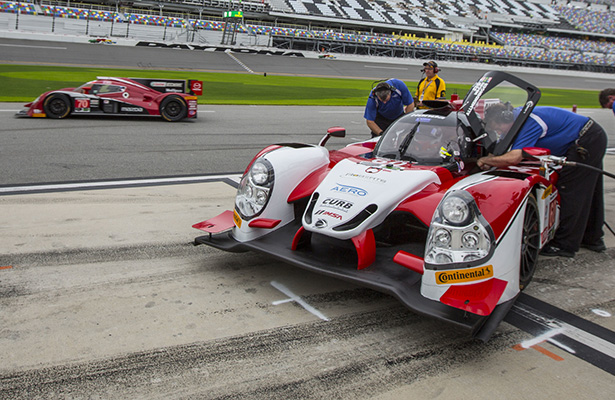
Photo: Brian Cleary/BCPix.com
This time next year, IMSA teams and manufacturers will be in the final stages of preparing for the start of a new era of North American prototype racing, with the launch of the 2017 LMP2 regulations, which includes the series-specific Daytona Prototype International (DPi) platform.
For IMSA, which has been working jointly with the FIA and ACO on the global ruleset, 2016 will mark a busy year in the development, testing and validation of the new formula.
“A lot of work has gone on behind the scenes up to this point with the GT class [regulations], but now that it’s getting implemented, our full focus is on DPi for 2017,” IMSA VP of Competition Simon Hodgson told Sportscar365.
“We’ve got wind tunnel testing planned and we understand the schedule from some of the interested parties of when the constructors are going to have cars in place.”
The IMSA-specific DPi platform, featuring manufacturer-specific engines and bodywork fitted to the four approved global LMP2 constructors, will compete alongside the new standard LMP2 cars, which will be powered by a spec Gibson-tuned V8 engine.
While not a single manufacturer has yet to officially commit to the DPi platform for 2017, Mazda has laid out intentions, while at least one other OEM is in the advanced stages of the planning process as well.
It’s known GM — most likely with its Cadillac brand — as well as Honda Performance Development have also been evaluating the possibilities of entering the platform, although either has yet to formally announce plans.
According to IMSA’s Director of Racing Platforms, Mark Raffauf, the interest level has been high, and estimates there could be anywhere from two to five manufacturers on the Prototype class grid next year.
“There’s probably more interest that there’s been in a top-level class to more people in quite some time,” Raffauf told Sportscar365. “There’s options to win the big races in North America, with something for everybody. It’s a big opportunity.”
Raffauf confirmed each manufacturer must commit to both an engine and bodywork package and would be locked into an alliance with one of the four constructors it selects, unlike the previous DP formula, which allowed bodywork such as the Corvette DP outfitted on multiple chassis.
He expects the visual appearance of each DPi car to be distinctly different from the generic bodywork that will be produced by approved constructors ORECA, Onroak Automotive, Dallara and Riley-Multimatic.
While some areas such as the cockpit, rear wing, shark fin and floor of the car cannot be changed per regulations, other areas such as the nose will be an open canvas, in what Raffauf says will be more than styling cues but not to the extreme of the Corvette DP bodywork.
On the engine front, IMSA will allow most of the existing powerplants competing in the Prototype class, plus engines from FIA GT3 cars, which opens up a number of possibilities.
They are expected to see a slight increase in power levels over what’s currently seen in the P class.
“We have engines that pretty much exist, either GT3 or existing engines you see in the paddock right now in P,” Raffauf said. “That part of it is done. The car will be done. It will really just be capturing the DNA in the bodywork to go with the engine.”
While the LMP2/DPi regulations are locked in for a minimum of four years with the same constructors and chassis, Raffauf said manufacturers will be allowed to make changes to the appearance of the bodywork or even debut new engines and/or branding over that period, under an approval and homologation process.
“If they come out with a new engine, they can follow the original process and rebadge and redo their car,” he said.
“The basic car remains intact but if they want to change the engine because they’re introducing a new product in that period and want to highlight that product, [the OEM] has that option.
“In four or five year runs, things change in the manufacturer side; the door is there to come to us for them to come to us and say, ‘We want to move this to this look, this model, this style.’
“The DNA of some brands change completely in that time. We have that option in place.”
Check back Tuesday for Part 2 of this article.



















